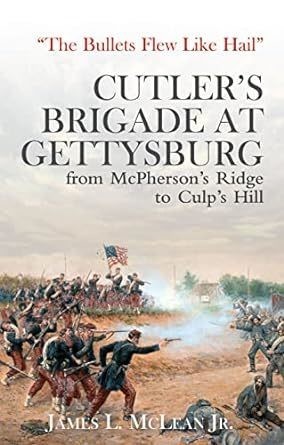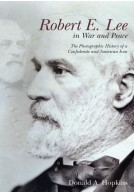“The Bullets Flew Like Hail” (Hardback)
Cutler’s Brigade at Gettysburg from McPherson’s Ridge to Culp’s Hill
Imprint: Savas Beatie
Pages: 288
Illustrations: 55 images, 40 maps
ISBN: 9781611216677
Published: 15th August 2023
Pages: 288
Illustrations: 55 images, 40 maps
ISBN: 9781611216677
Published: 15th August 2023
You'll be £27.99 closer to your next £10.00 credit when you purchase “The Bullets Flew Like Hail”. What's this?
+£4.99 UK Delivery or free UK delivery if order is over £40
(click here for international delivery rates)
Order within the next 3 hours, 59 minutes to get your order processed the next working day!
Need a currency converter? Check XE.com for live rates
(click here for international delivery rates)
Order within the next 3 hours, 59 minutes to get your order processed the next working day!
Need a currency converter? Check XE.com for live rates
On July 1, 1863, Brigadier General Lysander Cutler commanded the first Union infantry to relieve Brigadier General John Buford’s hard-pressed cavalry on the western outskirts of Gettysburg. The brigade’s stubborn defense along McPherson’s Ridge and the arrival of the famous Iron Brigade stopped the Confederate advance on the town and set the tone for the three-day battle. All of this is laid out in “The Bullets Flew Like Hail:” Cutler’s Brigade at Gettysburg, from McPherson’s Ridge to Culp’s Hill by James L. McLean, Jr. Early in the fight, two of the brigade’s regiments, the 14th Brooklyn and the 95th New York, along with the Iron Brigade’s 6th Wisconsin, participated in one of the most famous assaults of the war. The three regiments simultaneously charged across open ground, repulsed the attack of Brigadier General Joseph Davis’s Rebel brigade, and captured a large number of Mississippi and North Carolina troops protected by an unfinished railroad cut. By the end of July 1, Cutler’s brigade had fought against Confederate brigades led by James Archer, Joseph Davis, Alfred Iverson, Junius Daniels, and Alfred Scales. The brigade was one of the last to leave the field of battle and successfully reformed on Cemetery Hill. On July 2 the brigade was sent to Culp’s Hill. During the evening of July 2 and the early morning hours of July 3, Cutler’s men assisted Brigadier General George Greene’s 12th Corps brigade in repulsing spirited Southern attacks against the Union right flank. In doing so, Cutler’s veterans held the distinction of being among the few Union troops who fought all three days of the battle. The performance of the brigade at Gettysburg came at a great cost. In the battle, only five Union and Confederate brigades sustained 1,000 or more casualties. Cutler’s brigade was one of them. This brigade deserves to be recognized for its heroic performance throughout the fight. Accompanying the text in “The Bullets Flew Like Hail” are 39 detailed maps depicting troop movements throughout each phase of the battle. A photographic supplement provides a look at the battlefield’s terrain and the major personalities discussed within the book.
Customers who bought this title also bought...
Other titles in Savas Beatie...
















